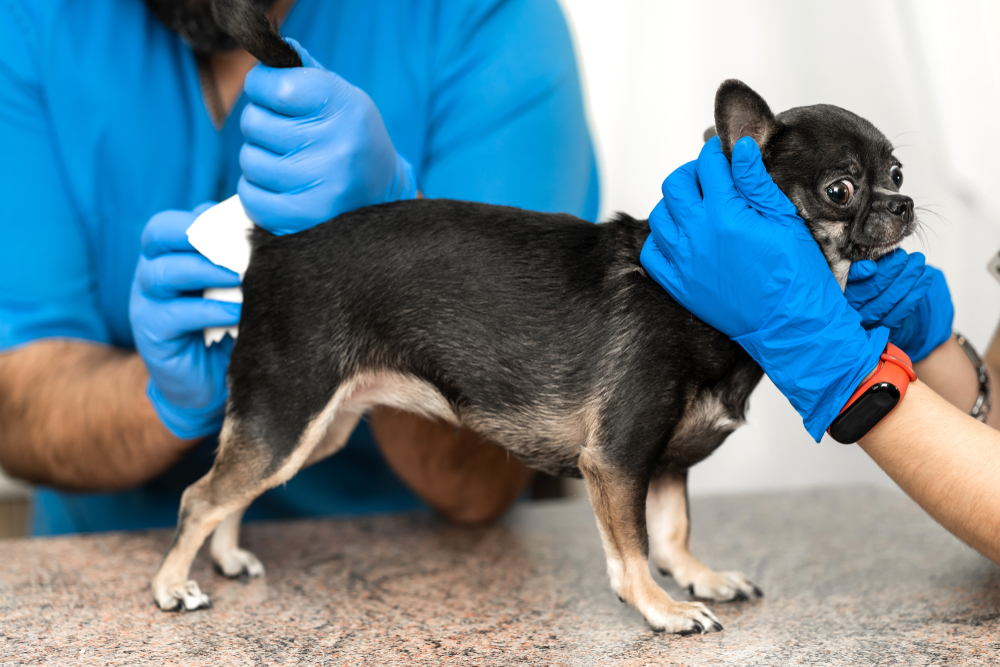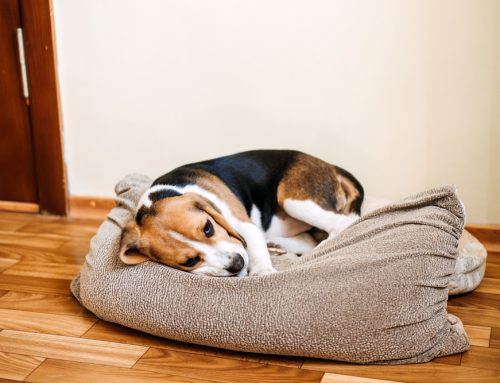For many pet owners, grooming is synonymous with fluffy poodles, cute hair bows, and overpowering pet cologne. And while we’re all suckers for a perfectly perfumed pooch, grooming is fundamentally about pet health. Regular brushing, bathing, clipping, and nail trimming helps your pet look good and feel good. Although those fancy coifs are better left to the professionals, you can and should perform many of your pet’s basic grooming tasks at home. Check out our Willow Wood Animal Hospital team’s tips and tricks for grooming your pet at home.
Why groom your pet at home?
If the phrase, “Home is where the fur flies,” describes your household, you may wonder why anyone would want to groom their pet at home. However, when you learn the proper techniques and training, and have the appropriate tools and patience, at-home pet grooming offers some serious advantages, which include:
- Improved pet health — Regular grooming helps minimize common health problems (e.g., skin issues, nail injuries, ear infections). When you regularly groom your pet, you can detect innocuous issues (e.g., parasites, skin growths, allergies) and ensure your veterinarian addresses them before they become painful or serious.
- Affordability — At-home grooming’s only costs are basic tools and a little bit of time.
- Reduced stress — At-home grooming is less stressful for anxious, fearful, or elderly pets.
- Ease — No more transportation-related challenges.
- Convenience — Schedule your pet’s at-home grooming tasks around your daily routine, or divide them up for maximum convenience.
Basic coat care for pets
Brushing and combing your pet’s coat reduces painful tangles and matting, removes debris, aids natural shedding, distributes natural oils, and improves skin health by increasing air flow and circulation. Weekly brushing is appropriate for most short- and medium-haired pets, while long-coated breeds require more frequent and thorough brushing. If your pet has a long or double coat, you’ll need to practice the proper brushing technique:
- Rather than running the hairbrush over the top of your pet’s coat, part the hair in sections and brush outward along the hair shaft, starting at the skin.
- Gently detangle matted areas by wetting the hair and teasing apart the mat, starting at the outer edge.
- If your pet has severe mats, a professional groomer should shave those areas to prevent your pet from experiencing unnecessary pain and discomfort.
Bathing your pet
Bath time doesn’t have to be a hassle for you or your pet. To simplify and improve your pet’s scrub-a-dub experience, follow these easy tips:
- Exercise your pet first — Tired pets are calmer and more cooperative.
- Use a nonslip bath mat — Slick shower, tub, and kiddie pool floors can make pets anxious. If your pet slips and falls during their bath, they could sustain serious injury.
- Place small dogs and cats in the sink — Save your back by bathing small pets in the sink or a portable elevated pet tub.
- Give your pet something to do — Positive distractions, such as these lickable feeding mats for dogs and cats, can redirect your pet’s nervous energy and help keep them still.
- Rinse, rinse, rinse — Lingering shampoo and conditioner residue can make a pet intensely itchy. Rinse your pet thoroughly until the water runs clear.
- Dry thoroughly — While short-haired dogs can air dry outdoors in warmer weather, furry pets require thorough towel drying or air drying with a hair dryer set on its lowest setting. To prevent moisture-related irritation, dermatitis, and mild hypothermia, ensure your pet’s hair is completely dry after bathing them.
Trimming your pet’s nails
Most pets’ nails should be trimmed at least monthly, although more frequent trimming is best. Be careful to avoid the sensitive quick—the soft cuticle-like structure at the nail’s center that contains a blood vessel and nerve. To ensure your pet’s successful nail trimming experience, follow these tips:
- Use the right tool for you and your pet — Our Willow Wood Animal Hospital team recommends plier-style nail trimmers sized for large dogs and for small dogs, and small scissor-style trimmers for cats. Guillotine-style trimmers can be awkward to use.
- Trim one nail at a time — While your pet is learning to adjust to having their nails trimmed, focus on one nail or paw at a time.
- Use lots of tiny high-value treats — Frequent rewards can help distract your pet and create a positive association with the nail-trimming activity.
- Trim small pieces and watch for the quick — Trim away small nail slivers and stop when you see a small dot or color change at the nail’s center as this is the quick’s leading edge.
- Stop bleeding with cornstarch or flour — If you inadvertently cut one of your pet’s nail quicks, apply a pinch of cornstarch or flour to the exposed nail and press firmly to stop the bleeding.
Cleaning your pet’s ears
By removing waxy debris and promoting a healthy pH, routine ear cleanings can help prevent ear infections. Simply soak a cotton ball in veterinarian-recommended ear cleaning solution, warm the soaked cotton ball in your palm, then insert it into your pet’s ear canal. Gently grasp the ear base and lightly massage to circulate the cleaner and dislodge any debris. Allow your pet to shake their head if needed. Remove the cotton ball and dry the visible ear canal thoroughly. A professional groomer should pluck visible hair in your pet’s ear canal. Poodles and shih tzus commonly have ear hair that should be trimmed regularly.
Anal sac care for pets

Our team does not recommend you express your dog’s anal sacs (i.e., anal glands) at home. Although most groomers offer anal sac expression, they generally use an external method that is less effective than the internal expression our Willow Wood Animal Hospital team performs. In addition, incorrect technique can cause your dog pain or serious harm. If you notice your pet scooting, licking, or leaking malodorous anal sac fluid, schedule an appointment to have one of our highly trained veterinary technicians perform this task.
At-home grooming is a great way to care for and bond with your pet—plus, clean pets are much more pleasant to snuggle! For additional expert pet grooming tips or to schedule your pet’s next appointment, contact our American Animal Hospital Association (AAHA)-accredited Willow Wood Animal Hospital team.







Leave A Comment